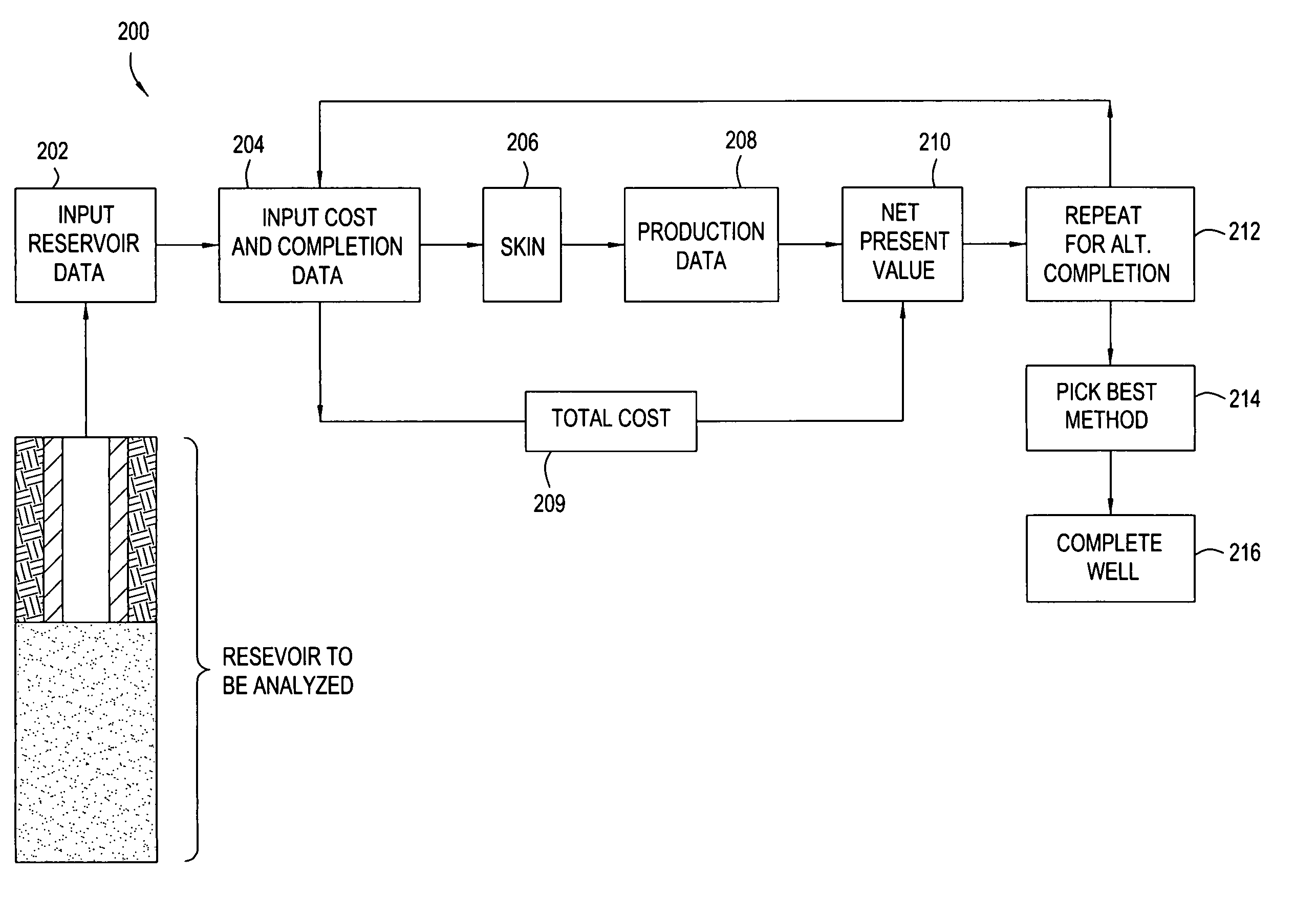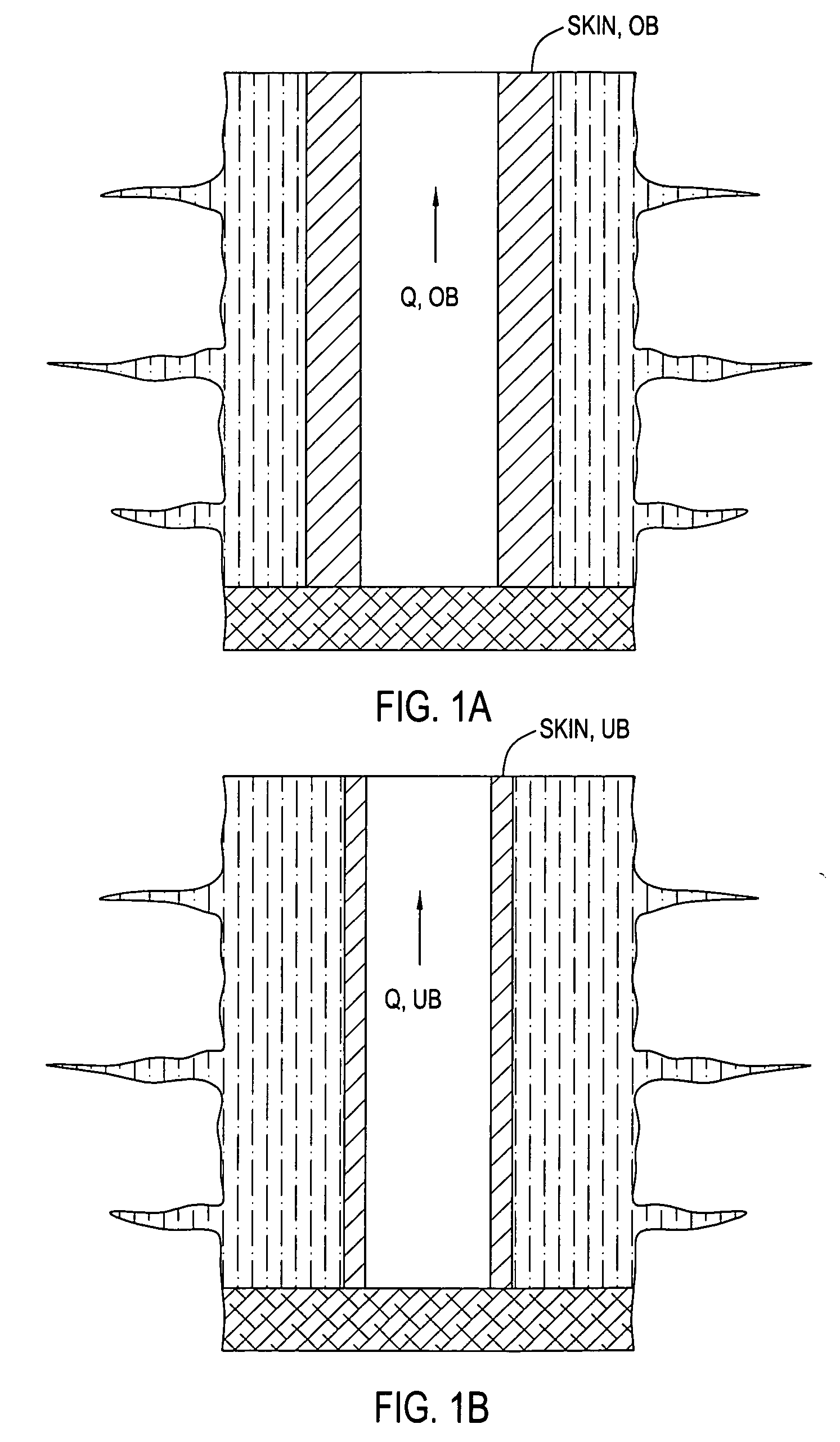System for evaluating over and underbalanced drilling operations
a drilling operation and system technology, applied in the field of completion of wells, can solve problems such as damage to the well, near-bore formation damage, and formation damage, and achieve the effects of avoiding formation damage, avoiding formation damage, and avoiding formation damag
- Summary
- Abstract
- Description
- Claims
- Application Information
AI Technical Summary
Benefits of technology
Problems solved by technology
Method used
Image
Examples
Embodiment Construction
[0032] The present invention provides an improved method and software for evaluating completion of a wellbore. The invention employs extensive input and calculation modules as a means for efficiently comparing alternative methods of completion.
[0033]FIGS. 1A and 1B depict a wellbore completed using overbalanced and underbalanced techniques, respectively. As discussed above, overbalanced completion results in more skin damage to the producing formation than does a well completed using underbalanced techniques. Thus, the flow rate, Q, for a given well, will be lower for the well completed by overbalanced drilling compared to the same well completed with underbalanced techniques.
[0034] For sake of convenience, the software of the preferred embodiment discussed below shall be referenced in modules. These modules are the input, calculation, and risk modules.
[0035]FIG. 2 is a flow diagram of exemplary operations 200 for selecting a completion method (i.e., underbalanced or overbalanced...
PUM
 Login to View More
Login to View More Abstract
Description
Claims
Application Information
 Login to View More
Login to View More - R&D
- Intellectual Property
- Life Sciences
- Materials
- Tech Scout
- Unparalleled Data Quality
- Higher Quality Content
- 60% Fewer Hallucinations
Browse by: Latest US Patents, China's latest patents, Technical Efficacy Thesaurus, Application Domain, Technology Topic, Popular Technical Reports.
© 2025 PatSnap. All rights reserved.Legal|Privacy policy|Modern Slavery Act Transparency Statement|Sitemap|About US| Contact US: help@patsnap.com



